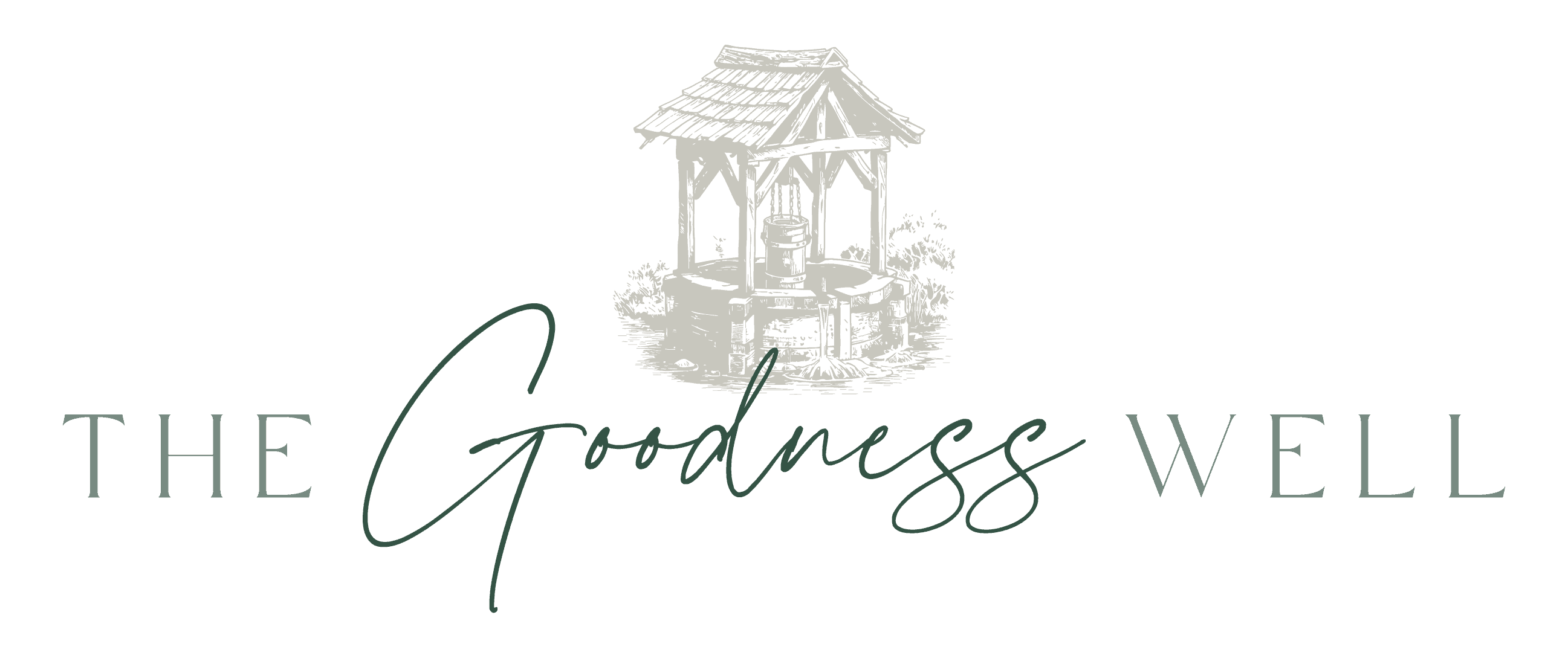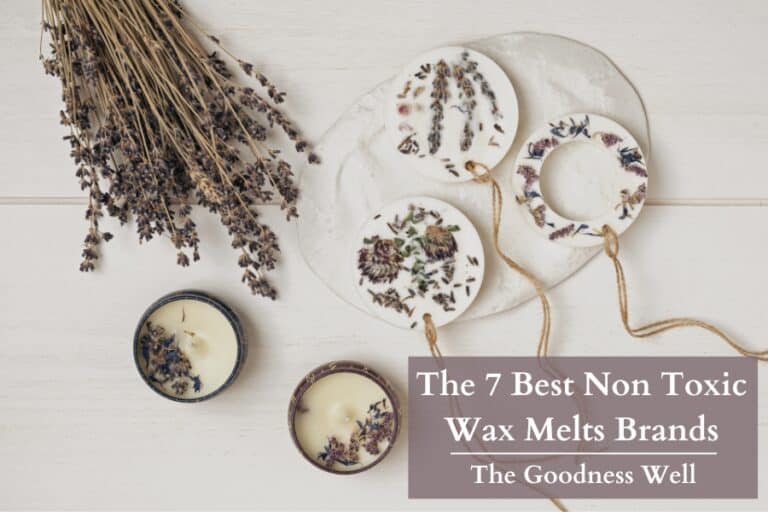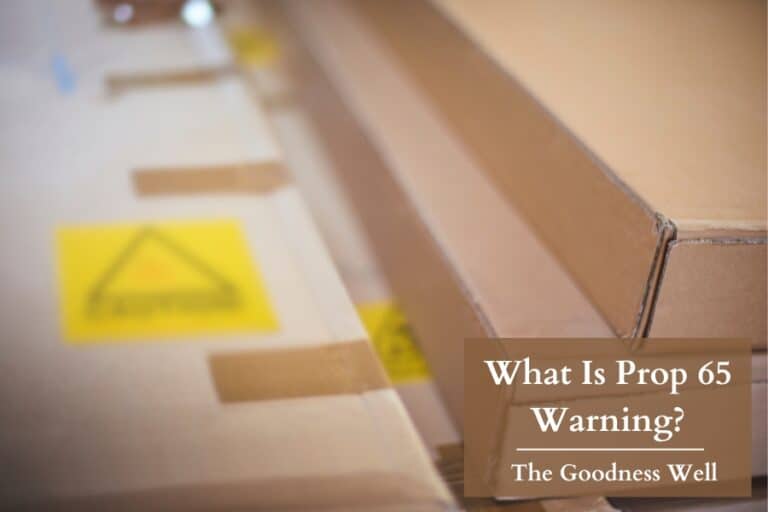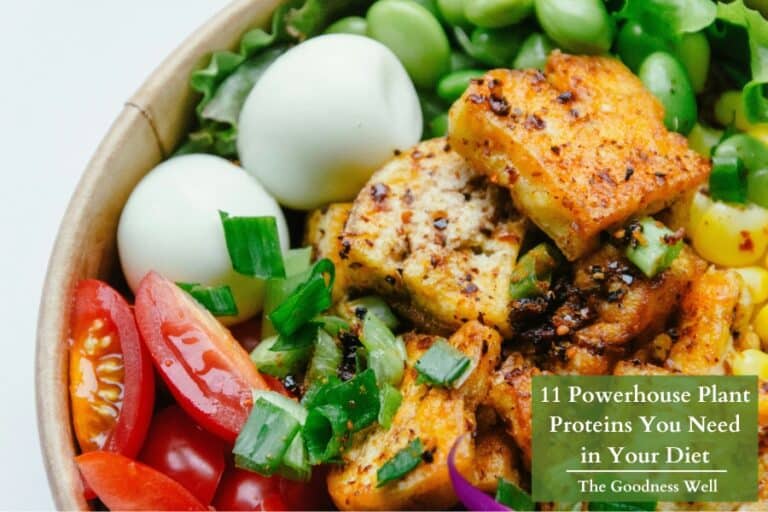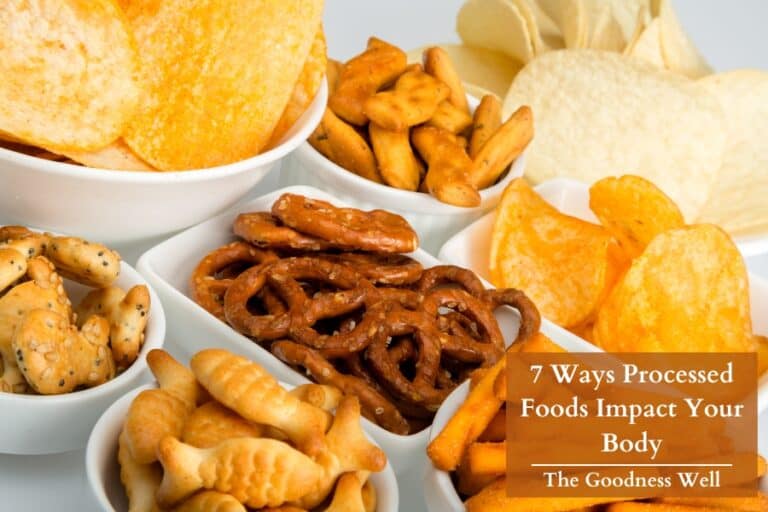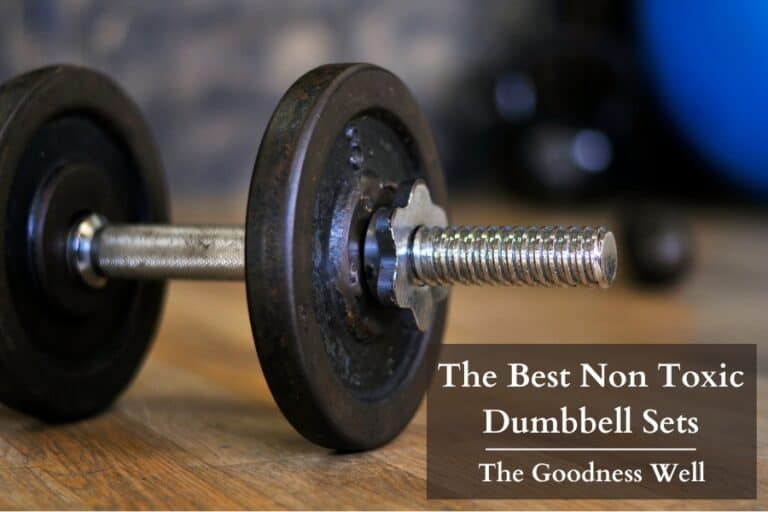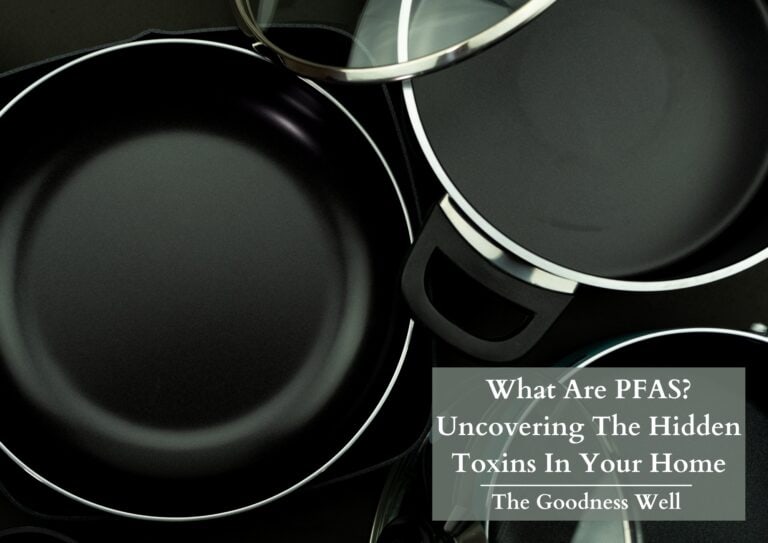The Ultimate Guide to Non-Toxic Food Preparation (7 Tips)
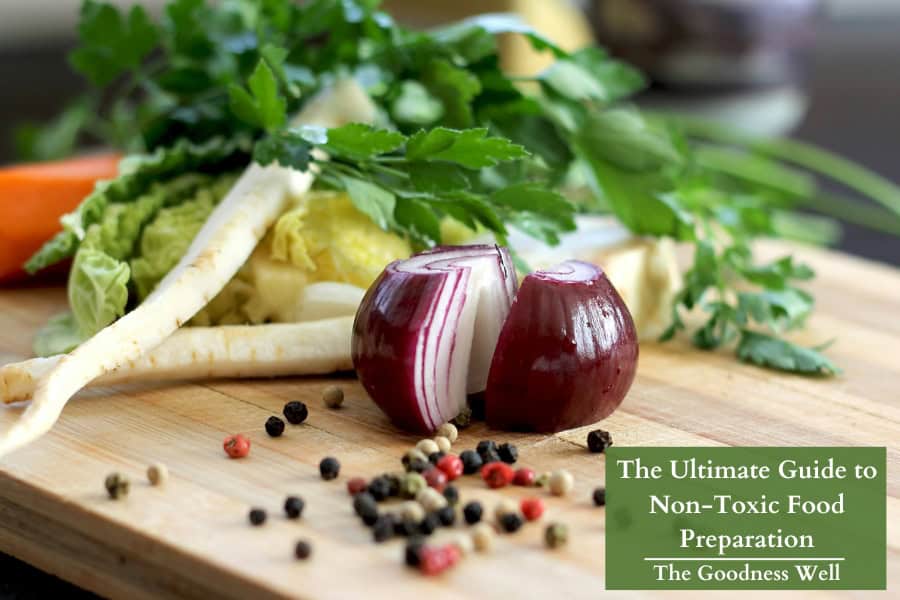
There are many steps between the farm and your plate where food can come into contact with different contaminants that are harmful to human health.
Pesticides, overused antibiotics, microplastics, heavy metals, and other pollutants have found their way into many foods found in the grocery store…
But the good news is there are steps you can take to protect yourself and your family from toxic substances hiding in food and the food prep process.
TL;DR
- Mindful Shopping
- Removing Pesticides
- Meal Prep
- Cooking Methods
- Choosing Safe Cookware
- Safe Food Storage
- Natural Cleaning Up
1. Mindful Shopping
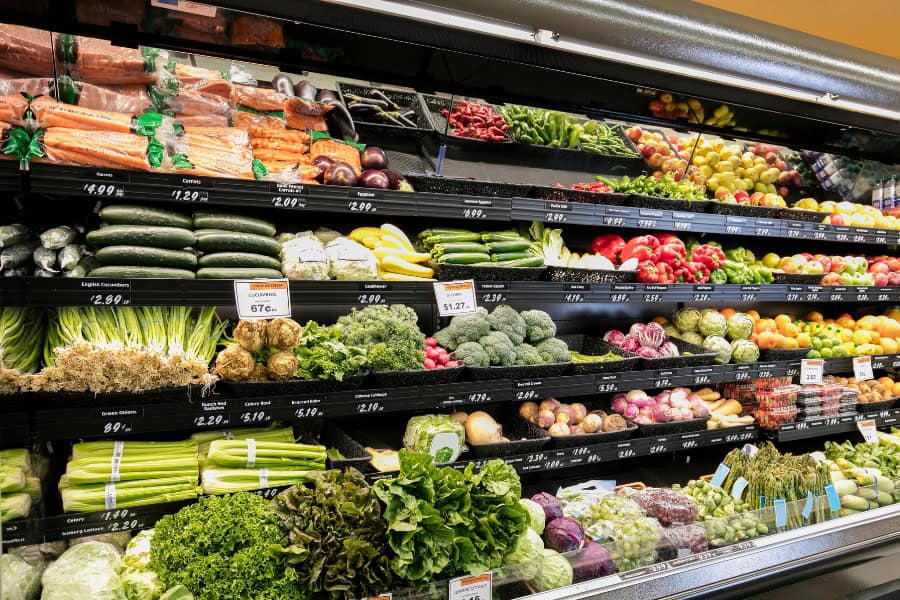
The first step for most people, is the grocery store.
Here you can find tons of highly processed, sugary, and pesticide-coated foods but you can also find organic, nutrient-dense, and safe foods here as well.
You just have to know what to look for. You have to learn how to read food labels!
I used to just grab whatever looked good off the shelf. Often just judging based on what the front label said.
I trusted labels like “Low-Calorie”, “Zero-Sugar”, “100% Natural”, and “Low-Fat” without even taking a glance at the nutrition label.
Unfortunately, that’s not enough to ensure a healthy product. There are a lot of labeling and marketing tactics used by most companies that trick us into thinking something is healthy or even safe when in reality their not.
Companies spend millions sometimes billions misleading you with false promises on the front cover hoping you don’t look at the ingredients and nutrient labels.
Talk about deception!
Use these tips to avoid being tricked and ensure you’re buy healthy foods at the store:
- Look for specific certifications like USDA Organic or Non-GMO Project Verified.
- Avoid products with natural flavors, artificial dyes, and sweeteners, corn syrup, soybean and vegetable oils
- Look for products not wrapped in plastic when you can
- Buy organic produce as much as possible
- Choose meat that is Grass-fed, Certified, Non-GMO and free of antibiotics
- Select high-quality, sustainably sourced meats and fish. No farm-raised!
2. Removing Pesticides
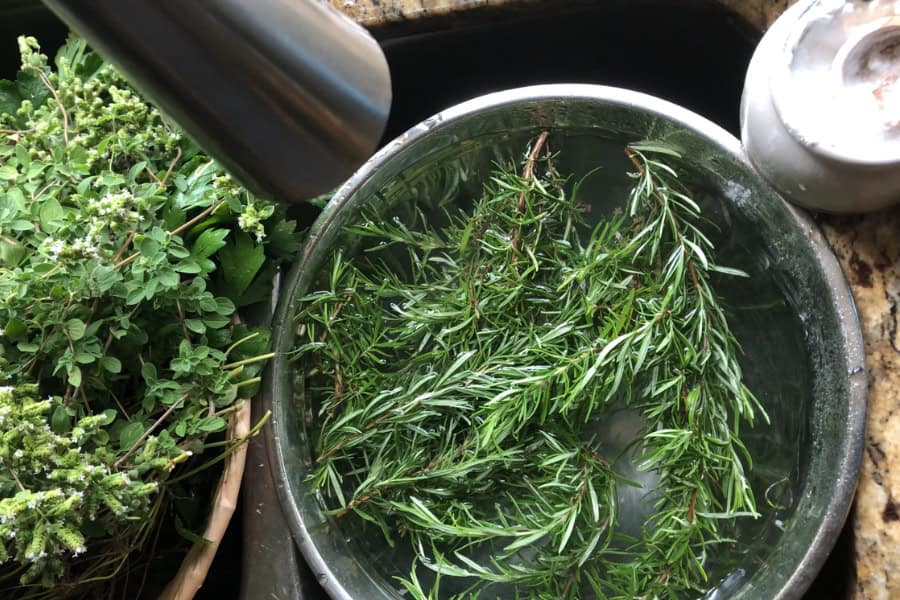
Okay, let’s talk about pesticides on our fruits and veggies. I used to think a quick rinse under the tap was enough to make produce safe.
Turns out, that pesticide residues can stick around even after washing.
These chemicals are designed to kill pests, so it’s no surprise they’re not great for us either. Some studies have linked long-term exposure to health risks including; cancer, hormone disruption, and neurological problems.
Now, I’m not saying we should all panic and swear off produce, even nonorganic produce. Fruits and veggies are still very important for our health. It’s more about being smart about how we choose and prepare them.
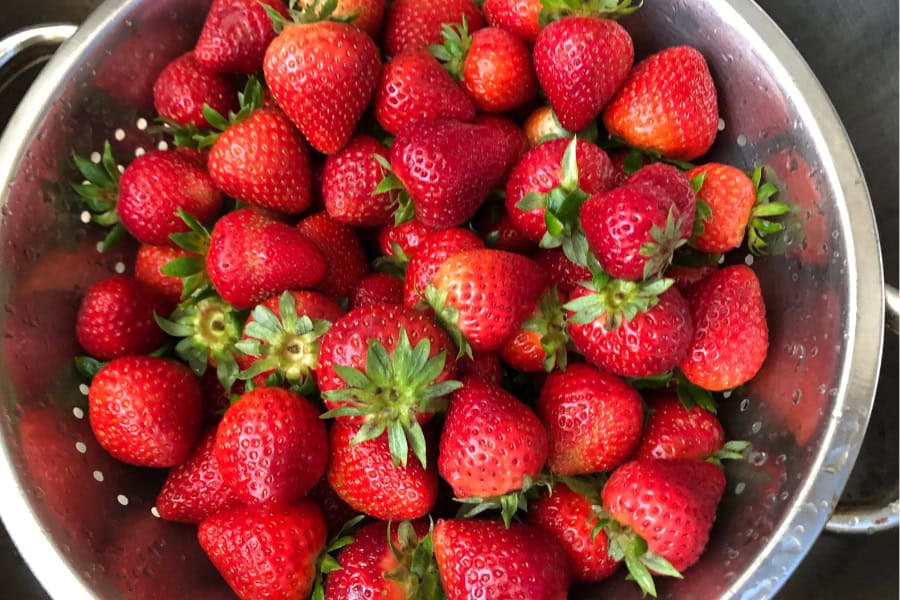
Something to note is that some produce are more likely to have high pesticide residues than others. The Environmental Working Group puts out these lists called the Dirty Dozen and Clean Fifteen.
They’re super helpful for figuring out where to prioritize organic purchases
But whenever you do buy conventional aka non-organic produce it’s important to wash them effectively.
Letting your produce soak in a baking soda and water solution for at least 15 minutes is a scientifically proven method and one of the most effective ways to remove pesticide residue.
3. Meal Prep
Removing pesticides from fruits and veggies is only one part of meal prep. Meats and grains also require some type of preparation to prevent cross-contamination and keep foods safe and fresh.
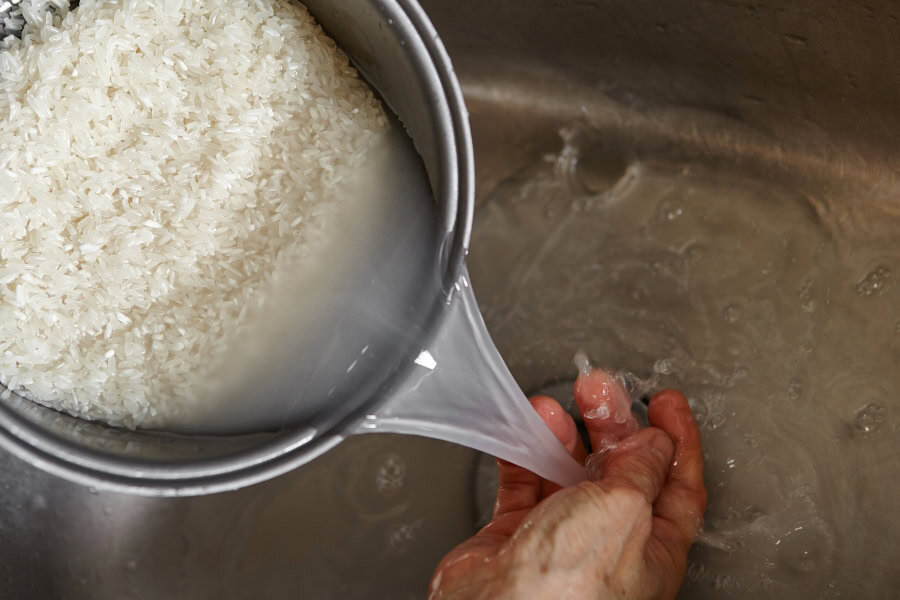
When it comes to grains like barley, rice, and quinoa, you want to make sure you give them a good rinse in a strainer to remove dirt, dust, and other contaminants. They don’t need to soak. Simply submerging them and then draining them in cool water will do the trick.
Now before I get into meat prep I’m going to shock and even step on some toes, so just a fair warning…
Before we got married, like many people, my wife always washed her chicken before seasoning and cooking it. That was the way her whole family did it and the way she was raised to do it BUT washing raw chicken can actually create risk of contamination.
According to multiple studies, by the CDC and the USDA, you should not wash chicken before cooking.
The USDA states that people who wash their chicken put themselves at risk of illness when they wash or rinse raw poultry.
A study by the CDC concluded that “Of the participants who washed their raw poultry, 60 percent had bacteria in their sink after washing or rinsing the poultry. Even more concerning is that 14 percent still had bacteria in their sinks after they attempted to clean the sink.”
So folks… stop washing raw chicken! Now if you want to, you can use a damp paper towel to pat the chicken dry to remove anything visible to the eye, but immediately throw that paper towel away and wash your hands.
“Washing, rinsing, or soaking meat and poultry in salt water, vinegar, or lemon juice eliminates bacteria.” That statement is not true. According to research, this is not an effective method.
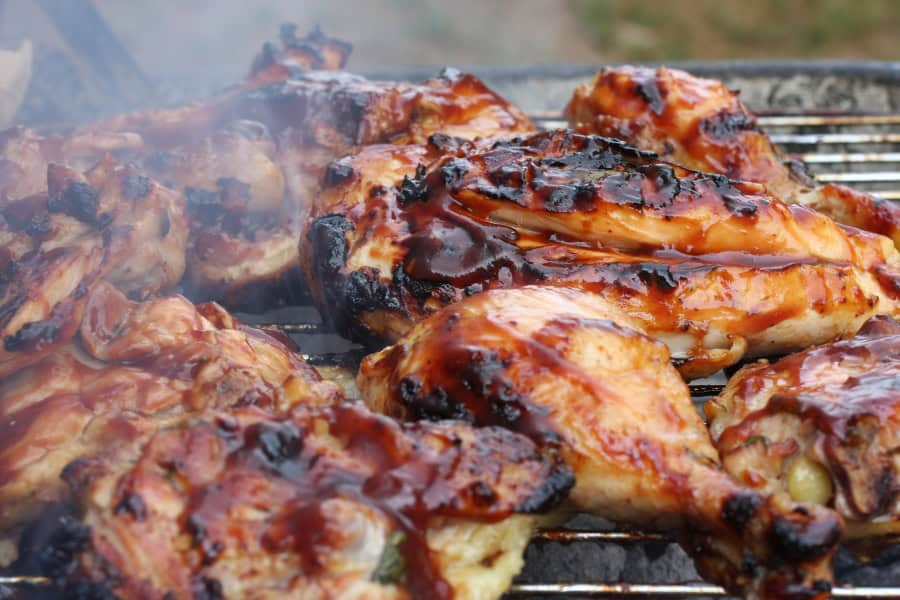
4. Cooking Methods
Contamination and risks for foodborne illnesses don’t end there. Cooking your meat properly is just as important.
Here’s a brief guide on what temperatures different meats need to be cooked at in order to be safe to eat.
- Beef
- Steaks, Roasts, and Chops: Cook to an internal temperature of 145°F and allow to rest for at least 3 minutes.
- Ground Beef (e.g., Burgers): Should be cooked to 160°F to ensure all bacteria are destroyed.
- Pork
- Pork Roasts and Chops: Cook to an internal temperature of 145°F with a 3-minute rest period.
- Ground Pork: Should be cooked to 160°F.
- Ham (Fully Cooked): Can be safely served at 140°F.
- Poultry
- Whole Poultry (e.g., Chicken, Turkey): Cook to an internal temperature of 165°F.
- Ground Poultry: Also needs to be cooked to 165°F to ensure safety.
- Lamb
- Lamb Roasts and Chops: Cook to an internal temperature of 145°F with a 3-minute rest period.
- Ground Lamb: Should be cooked to 160°F.
- Seafood
- Fish with Fins (e.g., Salmon, Cod): Cook to an internal temperature of 145°F or until the flesh is opaque and separates easily with a fork.
- Shrimp, Lobster, Crab, and Scallops: Cook until the flesh is pearly or white and opaque.
- Clams, Oysters, and Mussels: Cook until their shells open during cooking.
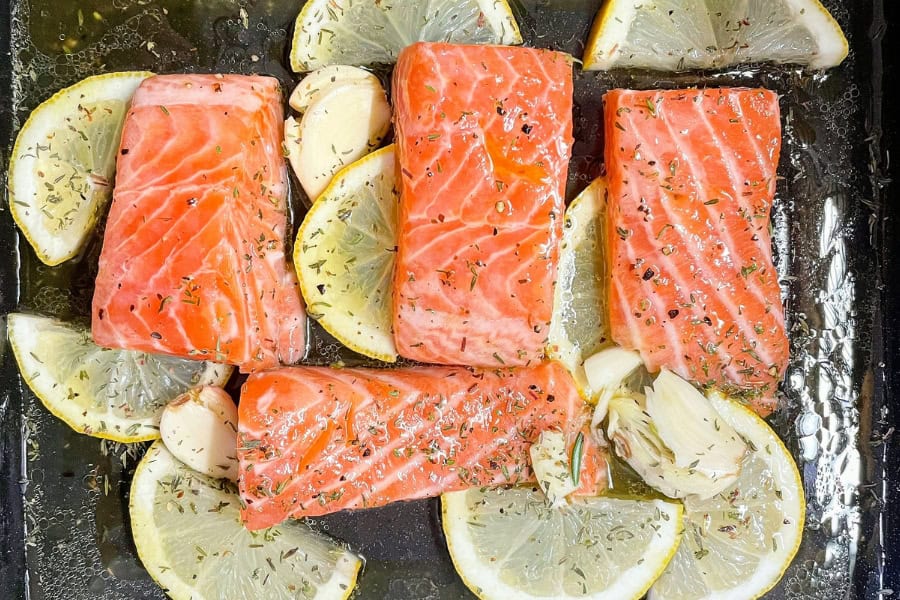
5. Choosing Safe Kitchenware
So we’ve got the food and the food prep cooking method covered. Now let’s talk about the materials you use to cook, specifically speaking the cookware.
Like most things in the 21st century, cookware has been created to be as convenient as possible but with this convenience comes a cost.
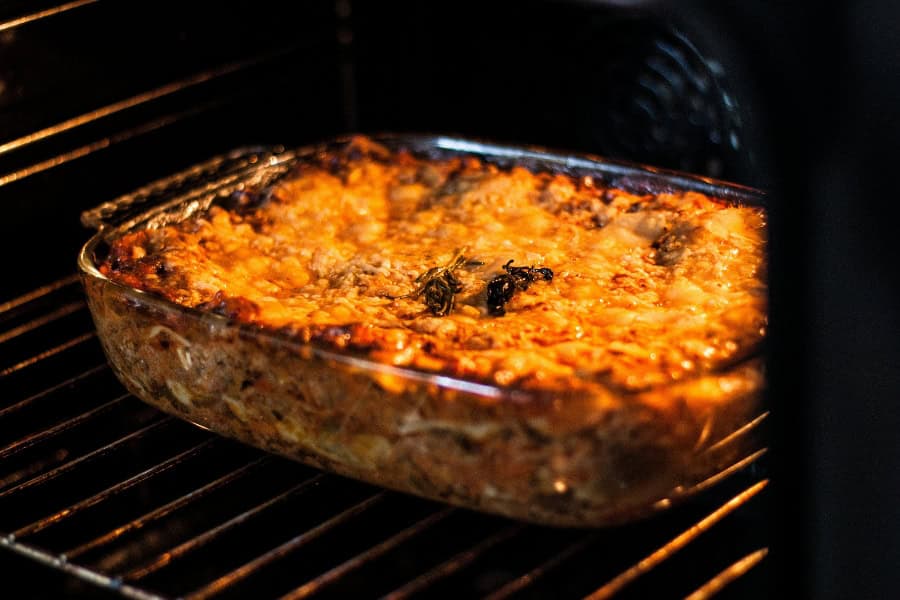
Most cookware in the U.S., especially nonstick ones, are coated with synthetic substances. For example, Teflon, also known as PTFE (polytetrafluoroethylene). While it makes cooking and cleanup easier, PTFE coated cookware can release harmful chemicals.
Nonstick coatings can also be coated with PFOA (perfluorooctanoic acid) and PFOS (perfluorooctane sulfonate) chemicals that have been linked to serious health risks. However, most manufacturers have phased out PFOA and PFOS and replaced them with similar chemicals like GenX, which are under scrutiny for being just as toxic.
So sure they stopped producing them, but PTFE-coated cookware is still found in many homes.
The risk from these products increases if they are used at high temperatures or when the coating is scratched or damaged.
Instead of these, choose safer cookware like stainless steel, glass, and cast iron(my favorite). 👍
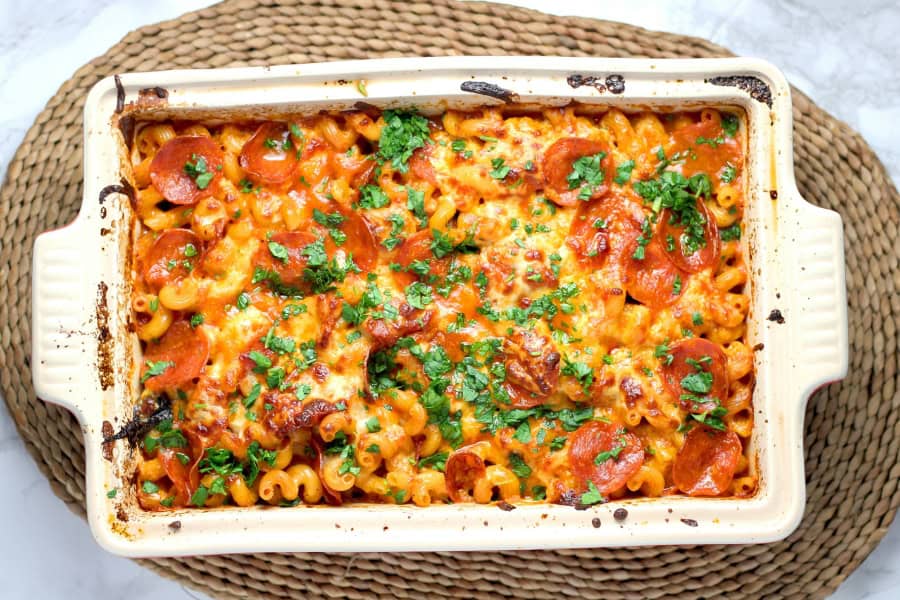
Ceramic is also another option but beware…True ceramic cookware is rare. Most “ceramic” pans are actually aluminum with a silicone-dioxide coating applied to them, to give them a ceramic-like appearance. It’s safer than traditional nonstick coatings, but it’s not the same as solid ceramic cookware …and a bit deceptive…
Also, be conscious about the cooking utensils you use. Swap of the plastic spatula and serving spoons for wooden, or stainless steel utensils. There’s nothing worse than heated plastic or microplastics leaching into your food.
Also, avoid using plastic cutting boards that chip off plastic into your food or wood cutting boards that use toxic glues and other finishes. Choose an eco friendly cutting board made with only natural materials. They really aren’t too expensive compared to conventional ones!
6. Safe Food Storage
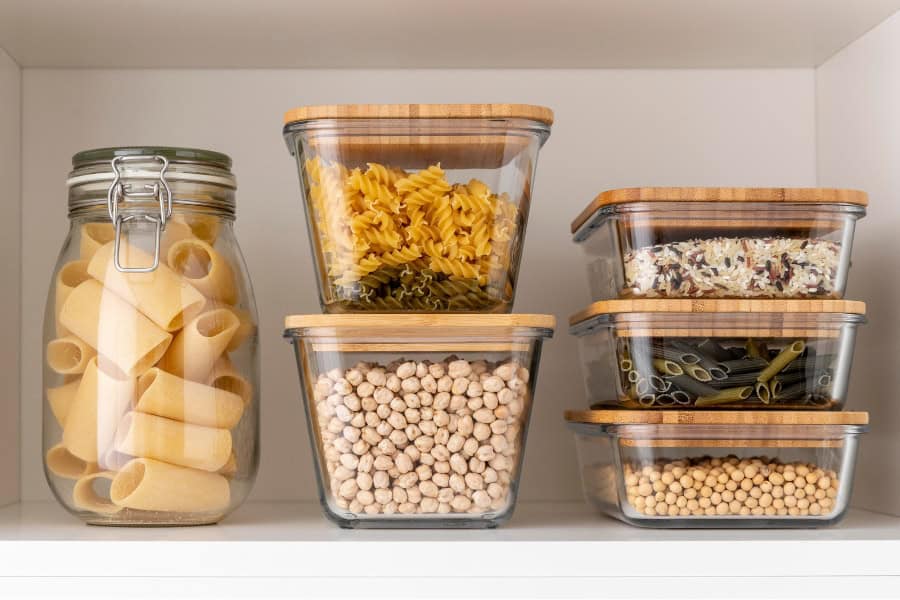
Alright, so you’ve done everything right and now it’s time to store your food.
Instead of going for the most popular option plastic Tupperware containers. Choose glass or another more sustainable and nontoxic material.
Not only can the plastic containers break microplastics off into your food but when heated in the microwave(even microwave-safe plastic) or warmed by hot food, plastic containers can leach harmful chemicals like BPA and BPS.
We use glass containers whether that be for our lunches to-go or for storing leftovers. While they cost more upfront, they save you money in the long run and most importantly they won’t leach harmful chemicals into your food.
You can also replace Ziploc bags that you use for sandwiches and small snacks with reusable beeswax paper or silicone baggies. They are a much more sustainable and safer option.
7. Natural Clean Up
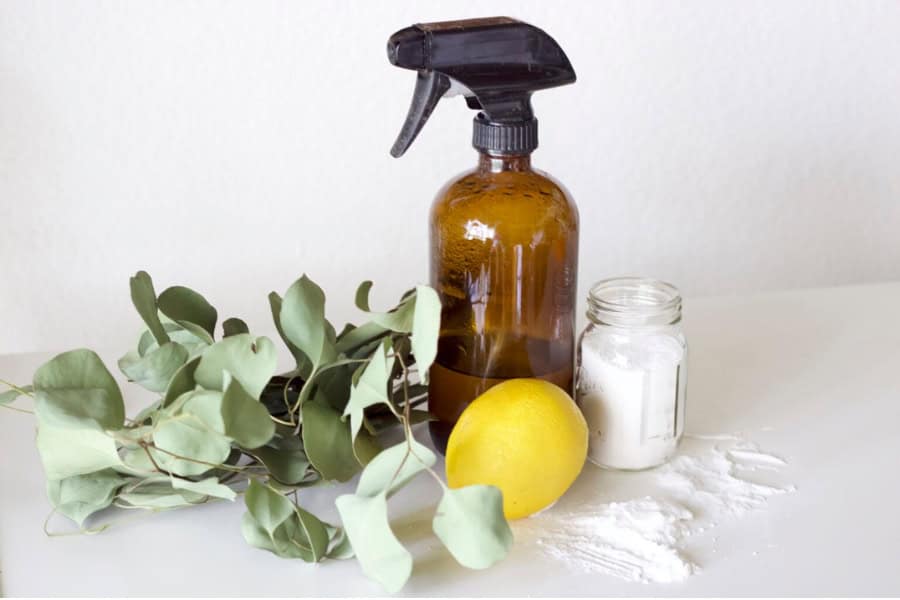
After cooking it’s important to go back through the kitchen and retrace your steps by cleaning and disinfecting whatever was used.
Sometimes all you need is a quick clean and other times you may need a deep disinfectant.
Yes… there’s a difference. My wife had to help me understand this one lol
Cleaners, natural or conventional are used to clean surfaces and maybe even give a good shine, while disinfectants are used to target specific things like germs and bacteria that the average cleaning solution isn’t effective against.
Both are important and have their purposes around the kitchen. Here are two recipes we use for cleaning and disinfecting.
Natural Cleaning Recipe For The Kitchen:
Ingredients:
- 1 cup white vinegar
- 1 cup water
- 10-20 drops of essential oil (such as lemon, lavender, or tea tree)
Uses:
- Ideal for removing dirt, grease, and residues from kitchen surfaces.
- Safe for countertops, appliances, and sinks.
- Leaves a nice, natural scent while providing a good clean.
Natural Disinfectant Recipe For The Kitchen:
Ingredients:
- 1 cup rubbing alcohol (at least 70% concentration)
- 1 cup water
- 10 drops tea tree oil (or another antibacterial essential oil like eucalyptus or thyme)
Uses:
- Effective at killing bacteria and viruses on high-touch areas like doorknobs, faucets, and cutting boards.
- Suitable for use on surfaces that need to be sanitized regularly.
- Provides a safer alternative to chemical disinfectants without compromising effectiveness.
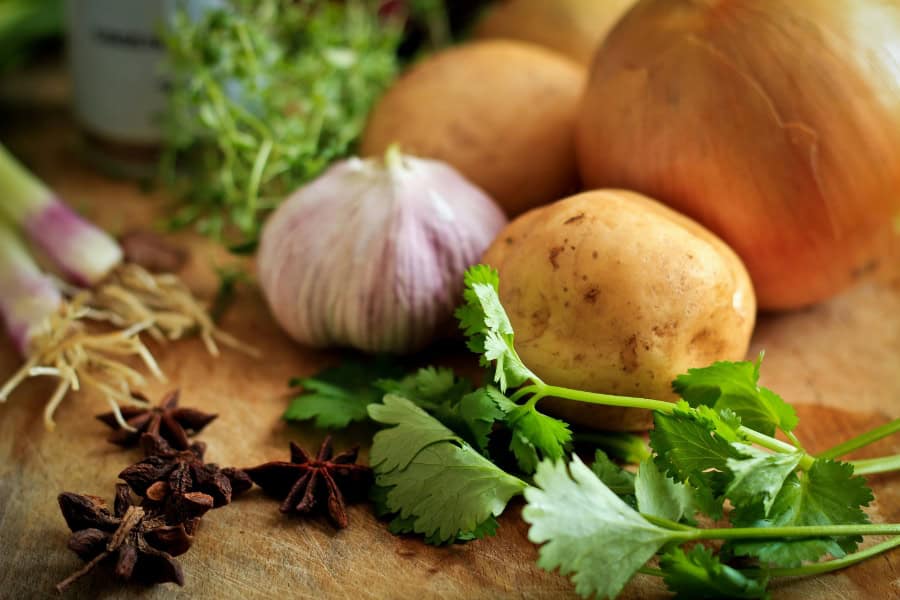
So there you have it! Now you have everything you need to buy, prep, cook, and store your food safely.
I hope this guide was helpful! If you have any tips you’d like to share, comment below. We’d love to hear from you!
